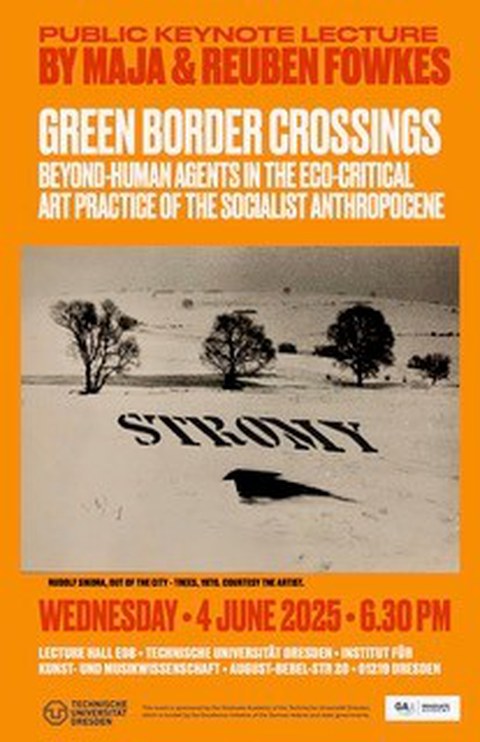Landscapes of Surveillance: Environmental Art and the Stasi in the Global GDR
Table of contents
Project description
Art in the late German Democratic Republic (GDR, 1949–1990) was one of the central sites for addressing the increasingly pressing environmental issues. Yet, no comprehensive account of environmental art in the GDR exists. Not only the influence of the Stasi on the thematic complex of environment and art but also its international manifestation are critically understudied. This leaves immense gaps in our historical understanding of the relationship between environment and society at local and international levels and the ways in which artists and state agents have shaped this relationship and may continue to do so today.
The GDR was governed by the Socialist Unity Party of Germany which enforced its communist ideology through an immense surveillance network of state agents and informants led by the Ministry of State Security, an apparatus commonly referred to as Stasi. This surveillance apparatus influenced all parts of society including the art world which was strongly affected by censorship and undermining. Another notorious intervention of the Stasi was the concealment of the consequences of large-scale environmental pollution in the GDR. This research project aims to reveal the role of the environment for the field of art in the GDR of the 1980s, determining the extent to which environmentally conscious artistic approaches were influenced by the Stasi as well as by local or global phenomena.
By analysing the triad of art, environment and the Stasi, I want to highlight transnational flows of money and ideas to question a strictly national historiography of art, emphasising how conceptions of nature and art shifted on a regional and international level through mutual exchange. Considering how artists have dealt with surveillance in urban and rural landscapes through various artistic media, this project aims to show the changing coping strategies and stylistic devices artists used. Against this backdrop, I hope that a more focused and detailed analysis of environmental art in the GDR reveals how artistic practices were deployed to navigate and to oppose the surveillance strategies and methods of the Stasi. Furthermore, I aim to highlight what role questions of gender and intersectionality played in the fields of environmental art and state surveillance in the GDR. In doing so, I hope to uncover power mechanisms deployed then and now for monitoring and discrimination both in the art world and in society at large.
Examining environmental art that encounters moments of surveillance, my research project aims to reveal the art world’s power structures that shed light on shifting dynamics between humans, nature and machines by the example of the GDR. This in turn might increase our understanding of the role of artists and governments in addressing environmental disasters and the impacts of climate change today.
Call for Papers
Socialist Eco-Aesthetics: Networks of Art and Ecology in the ‘Eastern Bloc’
Technische Universität Dresden, 4-6 June 2025
Call for Papers (Deadline for submissions: Sunday 2 March 2025)
This event is funded by the Graduate Academy of the Technische Universität Dresden, which receives its financial support from the Excellence Initiative of the Federal and State Governments.
Invitation to Public Keynote Lecture by Maja and Reuben Fowkes
Wednesday, 4th June 2025, at 6.30 pm, lecture hall ABS/E08
Institute of Art and Music, August-Bebel-Str. 20, 01219 Dresden
The lecture titled „Green Border Crossings: Beyond-Human Agents in the Eco-Critical Art Practice of the Socialist Anthropocene“ is the public part of the non-public workshop „Socialist Eco-Aesthetics: Networks of Art and Ecology in the ‚Eastern Bloc‘“, which will take place from 4 to 6 June at the TU Dresden.
This event is funded by the Graduate Academy of the Technische Universität Dresden, which receives its financial support from the Excellence Initiative of the Federal and State Governments.

